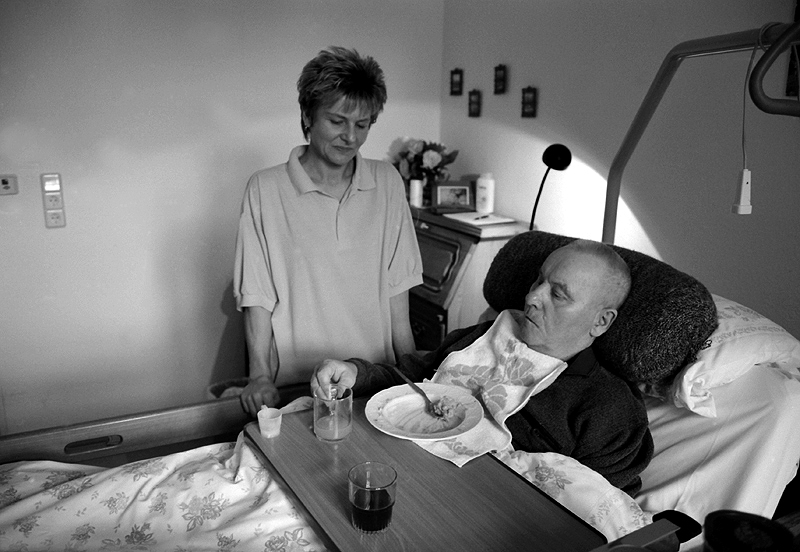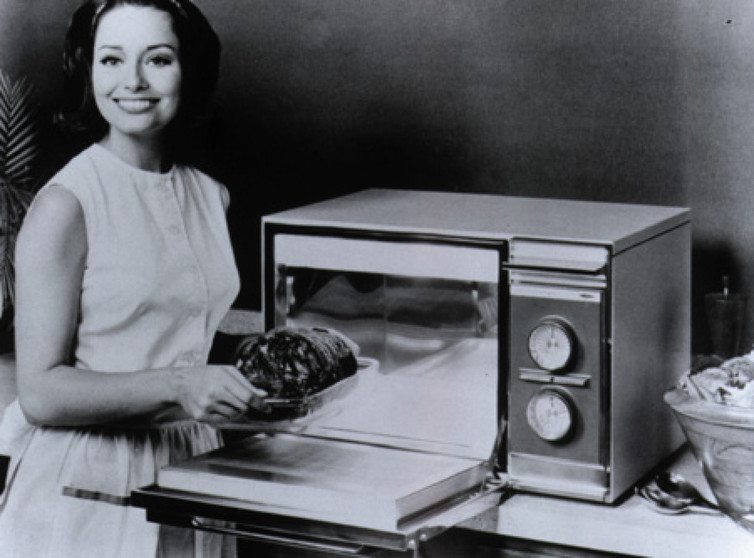We could be forgiven for thinking of nursing homes as uniquely depressing places. Even worse than the threat of painfully slow bingo tournaments or the scent of disinfectant in the halls is the food: We picture mush, overcooked and pallid, or boring TV dinner-like spreads that look and taste exactly the same for every resident.
My grandmother spent the last several months of her life in a nursing home. As recent memories faded away as a result of her dementia, she often clung to happy recollections of the past, like eating her mother’s handed-down recipe for Hungarian chicken paprikash or the fresh-baked bread her husband would make on weekend mornings. Being able to enjoy these foods again could have brought my grandmother a comforting warmth in an antiseptic and an unfamiliar place. But my family never brought her either of these dishes—we weren’t allowed to. Before a rash of regulatory modifications last fall, that small but meaningful gesture could technically have been grounds for disciplinary action against the facility.
The new and modified regulations explicitly state that menus at facilities participating in the Medicare and Medicaid programs must now reflect the religious, cultural, and ethnic needs of residents, be updated periodically, and undergo review by a dietician or nutrition professional (who, according to the new regulations, have higher certification requirements than in the previous iteration). Also, for the first time, nursing homes can officially grow their own food or buy it directly from local producers, and allow residents to eat food brought in by friends and family. Finally, meals and snacks can now be served whenever works best for the residents, not just at designated feeding times.
In practice, these changes are meant to ensure residents have more choice and control over their menus and have encouraged facilities to serve not only traditional staples like meatloaf or grilled cheese, but, depending on their demographic, cultural dishes like arroz con pollo, lo mein, or falafel. They allow nursing homes to participate in community supported agriculture programs or supplement their food orders with fruits or veggies from their own gardens. And overall, the regulations put much more of an emphasis on “person-centered” care where nursing home staff take residents’ individual preferences into account.
Upwards of 1.5 million residents currently reside in the more than 15,000 long-term care facilities that participate in the Medicare and Medicaid programs
For advocates (and, really, anyone willing confront the likelihood that they’ll end up in a long-term care facility one day), these changes represent a welcome step forward. But regulations are only as good as their implementation, and there’s still more that needs to be done to ensure that elders in federally-funded nursing homes across the country have a delicious, healthy, and dignified eating experience.
“In these facilities, food is so important,” says Janine Finck-Boyle, director of health regulations and policy at LeadingAge, a member organization for non-profit and mission-driven senior service providers. “It relates to your senses, to socialization. It’s not just the nutrition of bodies, but also minds. It’s about making a meal meaningful to a resident.”
Regardless of the age of an eater, food can evoke memories and emotional associations. However, because elders are especially susceptible to feeling like they’ve lost autonomy and choice, a satisfying food experience can significantly increase their quality of life.
“Good food, served in a home-like environment, will help the resident remember those special times in life that were important to them—holidays, birthdays, special occasaions,” says Neva Crogan, a university professor, researcher, and nurse practioner.
While the progress seen since last year provides cause for celebration, some stress cautious optimism
Even though she’s seen plenty of noncompliance with regulations during her 30-plus years of work in nursing home care, Crogan believes that CMS’s updates were significant enough to spur a real shift in the way facilities think about food.
“I’m sure there are still some nursing homes that have not stepped up to the new ways of doing things,” she says, “but I’m encouraged by what I see.”
Sue Hargreaves, the administrator of a Washington, D.C.-based nursing home, also says that the changes encourage more freedom to do right by residents. She occasionally orders Chinese food for one Cantonese resident who misses it. Yes, this concession costs more than a regular meal and is expensive for a non-profit facility like hers, but she knows that the substitution is meaningful to him and ordering it aligns with the regulations. Meanwhile, her staff has been cultivating its on-site herb garden and she fantasizes about one day adding vegetable plants.
But while the progress seen since last year provides cause for celebration, some stress cautious optimism. Robyn Grant, director of public policy and advocacy of the Consumer Voice for Quality Long-Term Care puts it bluntly:
“There are hundreds of regulations that need to be met and the funding is not changing—the reimbursement is not changing—for the positive,” she says. “And I don’t see it changing. Nursing homes are scrambling. It’s a delicate balance.”
With a proposed tax bill putting Medicaid and Medicare in jeopardy, nursing homes could ultimately be expected to do more with less
Grant sees nothing but more unfunded mandates in the future. Even as nursing home standards rise, she has seen food budgets shrink—in some of the worst cases, to below $1 per meal. That low cost will be tough to maintain as pressure grows to give residents individualized eating experiences. Facilities are essentially expected to do more with the same resources they’ve always had. And with a proposed tax bill putting Medicaid and Medicare in jeopardy, nursing homes could ultimately be expected to do more with less.
Tied to the scarcity of funding is a scarcity of staff. The National Consumer Voice for Quality Long-Term Care fought hard for more specific staffing numbers to be included in the new regulations and Grant says she’s disappointed that CMS fell back on the ambiguous call for “sufficient staff.”
“It’s so vague,” Grant says. “You can honor residents’ food preferences, but if you don’t have enough staff to assist residents who need help eating—and many do—that food stays on the plate.”
She had been arguing for minimum staffing numbers tied to the number of beds in a given facility.
Since the Phase One implementation deadline passed on November 28, 2016, there have been nearly 6,100 flagged deficiencies related to food in nursing homes around the country, according to filtered data from Medicare’s Database of Deficiencies.
Meanwhile, administrators like Hargreaves have resigned to provide the best care they can, even on a tight budget.
“None of us are getting out of here alive, but when we’re here and living, it should be enjoyable,” Hargreaves says. “I would like to see the new regulations taken as they were meant to be taken, which I think is to provide the least restrictive diet for residents. Let them eat cake, for god’s sake.”
Correction: An earlier version of this story identified updates to the federal nursing home regulations as having been made in 2016. That was only partially true. They were proposed in 2011 and made their way through the regulatory process—including a public comment period—until they officially went into effect in November of 2011.













